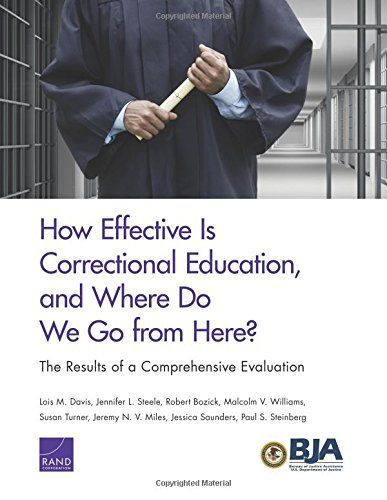
How Effective Is Correctional Education, and Where Do We Go from Here? The Results of a Comprehensive Evaluation
More than 2 million adults are incarcerated in U.S. prisons, and each year more than 700,000 leave federal and state prisons and return to communities. Unfortunately, within three years, 40 percent will be reincarcerated. One reason for this is that ex-offenders lack the knowledge, training, and skills to support a successful return to communities. Trying to reduce such high recidivism rates is partly why states devote resources to educating and training individuals in prison. This raises the question ofhow effective -- and cost-effective -- correctional education is: an even more salient question given the funding environment states face from the 2008 recession and its continuing aftermath. With funding from the Second Chance Act of 2007, the Bureau ofJustice Assistance, U.S. Department of Justice, asked RAND to help answer this question as part of a comprehensive examination of the current state of correctional education for incarcerated adults and juveniles. The RAND team conducted a systematic review of correctional education programs for incarcerated adults and juveniles. This included a meta-analysis on correctional education's effects on recidivism and postrelease employment outcomes for incarcerated adults, as well as a synthesis of evidence onprograms for juveniles. The study also included a nationwide survey of state correctional education directors to understand how correctional education is provided today and the recession's impact. The authors also compared the direct costs of correctional education with those of reincarceration to put the recidivism findings into a broader context.